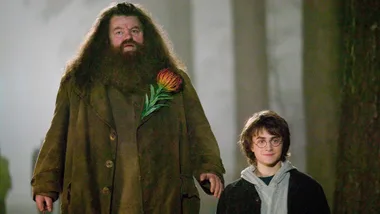Across Australia, devastating bushfires continue to burn leaving blackened, barren landscapes in their wake. This season’s catastrophic bushfires have claimed at least 23 lives, destroyed over 1,700 homes, and wreaked havoc on Australia’s ecosystems threatening our precious native wildlife.
WATCH BELOW: Australia Zoo Takes In Hundreds Of Animals Affected By The Bushfires
Adding even more concern to the situation is the fact Australia is home to a number of unique animals found nowhere else in the world due to our extreme geographical isolation which has allowed many species to evolve separately to those in other areas of the globe.
Here’s everything you need to know about the impact of the current Australian bushfires on native wildlife.
HOW EXACTLY HAVE THE BUSHFIRES IMPACTED AUSTRALIA’S WILDLIFE?
The impact of the bushfires on wildlife isn’t just limited to the obvious immediate of being in a fire’s path, the fires also threaten the long-term survival of many wildlife species due to the destruction of resources needed by animals such as food and shelter.
“If they’re injured by the fires, but otherwise survive the flames, they’ll have a tough period of convalescing and recovering. But the real problems for the majority of animals that survived the fires will be that their resources are gone including their food, water resources and shelter. Just the fires would bad enough but it’s all these additional interacting effects that also really drive the populations down to low levels,” explains University of Sydney Professor in Ecology, Chris Dickman.
As Professor John Woinarski of Darwin University and Deputy Director of the Threatened Species Recovery Hub of the National Environmental Science Program explains, there are “short term hits and then there’s longer-term consequences as well.”
“Any animal species that were above ground in most of these fires would have been killed instantly. Some that were underground, such as wombats, wouldn’t have been killed or injured by the fires but when they emerge from their burrows, the blackened landscape would leave them nothing to eat, so they starve over a matter of weeks. But even those animals that may not have been killed by the fires or starved, which have found unburned patches to shelter in, will then be exposed to increased predation by feral cats and foxes,” says Professor Woinarski.
“So there’s really high rates of mortality during the fires and immediately afterwards. Most animal species will take a long time to recover from these fires, because it will take many years, in some cases, for habitats to be suitable again for them.”
HOW MANY WILDLIFE ANIMALS HAVE PERISHED DUE TO THE BUSHFIRES?
A staggering statement that over one billion Australian wildlife animals have been killed in the bushfires has been going completely viral in news reports. The mind boggles at the sheer enormity of such a figure, which has led many to question whether it is really true. However, it seems the final figure could be even worse.
“It’s well over a billion – and it’s worth really emphasising – that’s a very conservative number, simply because the number is based on average density estimates for only the terrestrial mammals, birds and reptiles. We didn’t have any information on bats, so we couldn’t include them in the number. And, if you included bats as well as frogs and fish, you’d have much higher numbers still. Looking at the invertebrates, one recent estimate for insects alone was at around 240 billion killed,” says Professor Dickman.
How was the estimate on the number of animals killed estimated?
Professor Dickman explains the estimate was reached by examining the animal populations recorded during earlier research and their density in fire-affected areas.
“The estimate came from looking at the densities of animals in undisturbed habitats from a wide range of prior studies. Once we collated all of the studies that talked about densities, we were able to do a simple average of the numbers of animals in each of the groups – the possums, gliders, koalas, native rodents, lizards, and so on – and how many there would be a hectare of land. If you then take that density estimate and multiply by the area affected, then you come out with the numbers. These are purely estimates,” explains Professor Dickman.
“The more recent estimate of over a billion includes the now over five million hectares of New South Wales, and the 1.25 million hectares in Victoria. When you multiply those density estimates by that area, you get to easily over a billion just from those two states alone.”

HAS AUSTRALIA’S WILDLIFE BEEN IMPACTED LIKE THESE BEFORE?
Australia has a long history of severe bushfires with some of the most devasting blazes over the years including 1939’s ‘Black Friday’ fires, 1983’s ‘Ash Wednesday’ fires, and of course the recent 2009 ‘Black Saturday’ fires.
However, both Professor Dickman and Professor Woinarski are quick to point out we’ve never seen bushfires as extreme as this season.
“There have been severe wildfires before but not of the same length, duration, intensity and extent across so many states nor with such an impact on wildlife. Many of the animal species most affected by these fires were already threatened and down to critically small population sizes so the fires are compounding a heap of other factors,” says Professor Woinarski.
According to Professor Dickman the only other event that has taken a slightly comparable hit to Australia’s wildlife over the years is predation by feral cats.
“There is an annual event that passes by almost unnoticed causing the death of around two billion native vertebrates – that’s mammals, birds, reptiles, and frogs – and that’s predation by cats. But the difference there is that the two billion figure comes from estimates derived for the entire continent, over the course of the year. In the current bushfire season, we’re looking at well over a billion already, over a period of just four months, and that’s just in the forest and woodland areas,” says Professor Dickman.

WILL THE WILDLIFE AND THEIR HABITATS EVER RECOVER?
“Many plant and animal species are resilient and have had long adaptations so there is a high likelihood of recovery for many plant and animal species. But, for many others, it will be a really formidable challenge to get them back to the numbers they formerly were and it’s quite possible some species have been made extinct because of these fires. There’s no chance for recovery for such species once they’re lost,” says Professor Woinarski.
However, there is some good news. Putting aside the issue of unrecoverable extinct flora and fauna species, Professor Dickman says it’s likely ecosystems, in general, will otherwise recover and some will do it very quickly.
“Recovery will take place. In some places, it will be quick, and you’ll walk in a year or two later and think: ‘fire, what fire?’ Once you get good rains, you’ll start to get the germination of grass seeds and herbs. Flowers will start to pop up through the ashes and the eucalypts will start to resprout.”
“For the animal species that use the leaves of the plants, grass, or herb as cover as it comes up, the recovery should be fairly quick provided that they’ve had unburned areas that they can move out from,” says Professor Dickman.
However some ecosystems – particularly those impacted by severe fire damage – may take longer to recover and some may never return to what they previously were due to the balance of species being thrown out.
“In areas of intense fires where the trees have been burned, we may be looking at many decades before the forests come back, and some of the resources they provide may also take very long times to come back,” says Professor Dickman.
Professor Dickman also explains there is concern that species that have been badly affected by fires could be replaced by environmental weeds like serrated tussock grass, blackberry or lantana. Similarly, mobile pests like feral horses and deer are likely to make it back to burnt areas faster than kangaroos and other native species and consume the limited available vegetation.
“The ecosystem’s recovering, but sometimes the complement of species they contain will be different.”
WHICH SPECIES HAVE BEEN MOST SEVERELY IMPACTED?
On 20 January, the Department of the Environment and Energy released an initial list of threatened and migratory species which have “more than 10 per cent of their known or predicted distribution in areas affected by bushfires in southern and eastern Australia from 1 August 2019 and 13 January 2020.”
The threatened species list currently includes 272 plant, 16 mammal species, 14 frog species, nine bird species, seven reptile species, four insect species, four fish species and one spider species. Of these, 31 species are categorised as ‘critically endangered,’ a term used to describe the last stage of survival before an animal becomes ‘extinct in the wild.’
Among the threatened animal species at present are koalas, mountain pygmy possums, southern brown bandicoots, regent honeyeaters, and swift parrots.
Experts have also warned the full impact won’t be understood until a later point in time.
HAVE ANY SPECIES BECOME EXTINCT?
While the fires are still burning, it is difficult to know whether species have already been made extinct. However, researchers warn that extinctions have probably already occurred.
“We don’t know the number of extinctions yet, but it’s likely to be in the dozens for vertebrate animals and plants. There has been another separate estimate of the numbers of the insects alone that may have gone extinct and that figure was 700.” says Professor Dickman.
RELATED: How You Can Help Animals Affected By The Australian Wildfire Crisis

Across Australia, devastating bushfires continue to burn leaving blackened, barren landscapes in their wake. This season’s catastrophic bushfires have claimed at least 23 lives, destroyed over 1,700 homes, and wreaked havoc on Australia’s ecosystems threatening our precious native wildlife.
WATCH BELOW: Australia Zoo Takes In Hundreds Of Animals Affected By The Bushfires
Across Australia, devastating bushfires continue to burn leaving blackened, barren landscapes in their wake. This season’s catastrophic bushfires have claimed at least 23 lives, destroyed over 1,700 homes, and wreaked havoc on Australia’s ecosystems threatening our precious native wildlife.
WATCH BELOW: Australia Zoo Takes In Hundreds Of Animals Affected By The Bushfires










